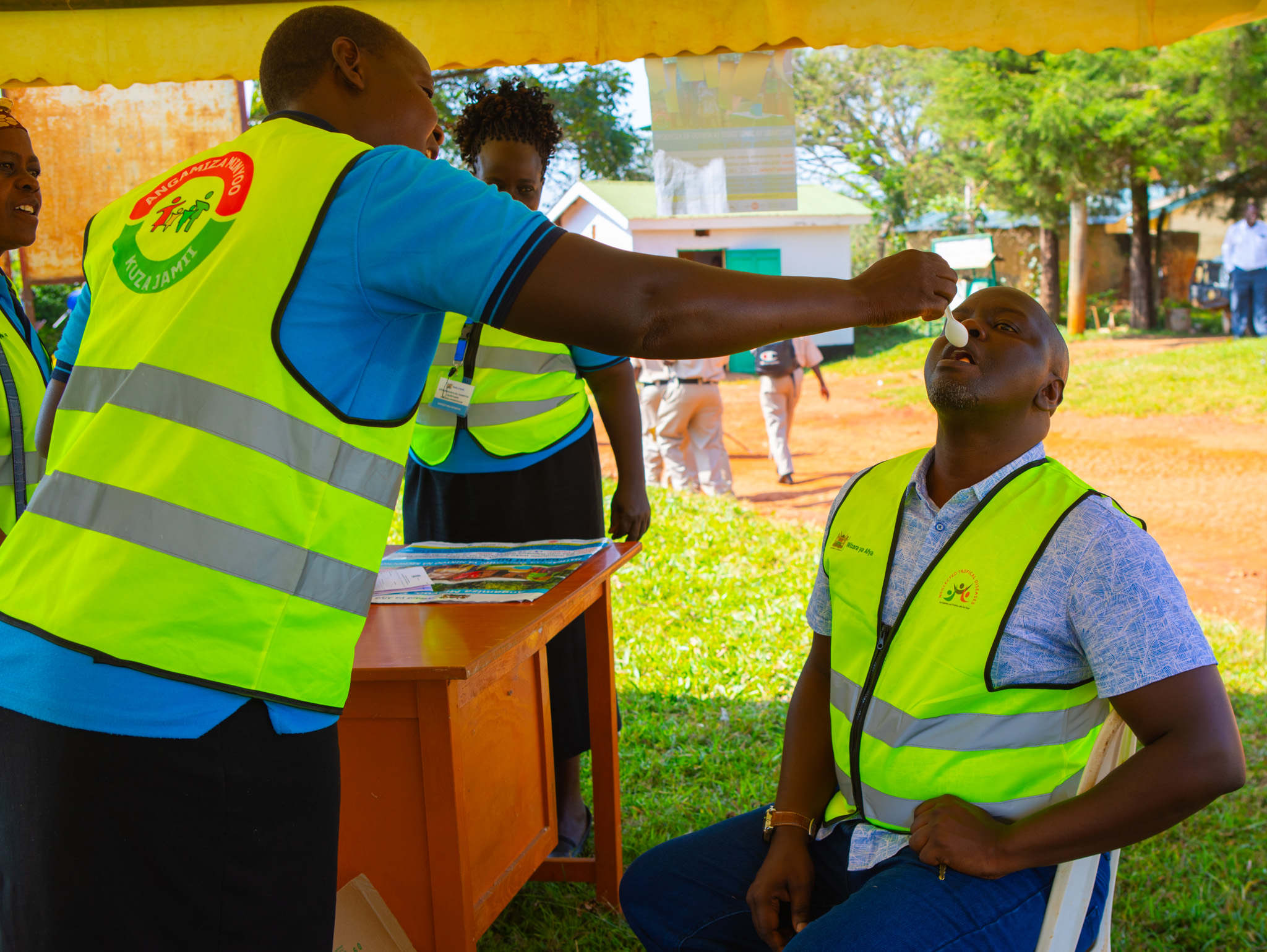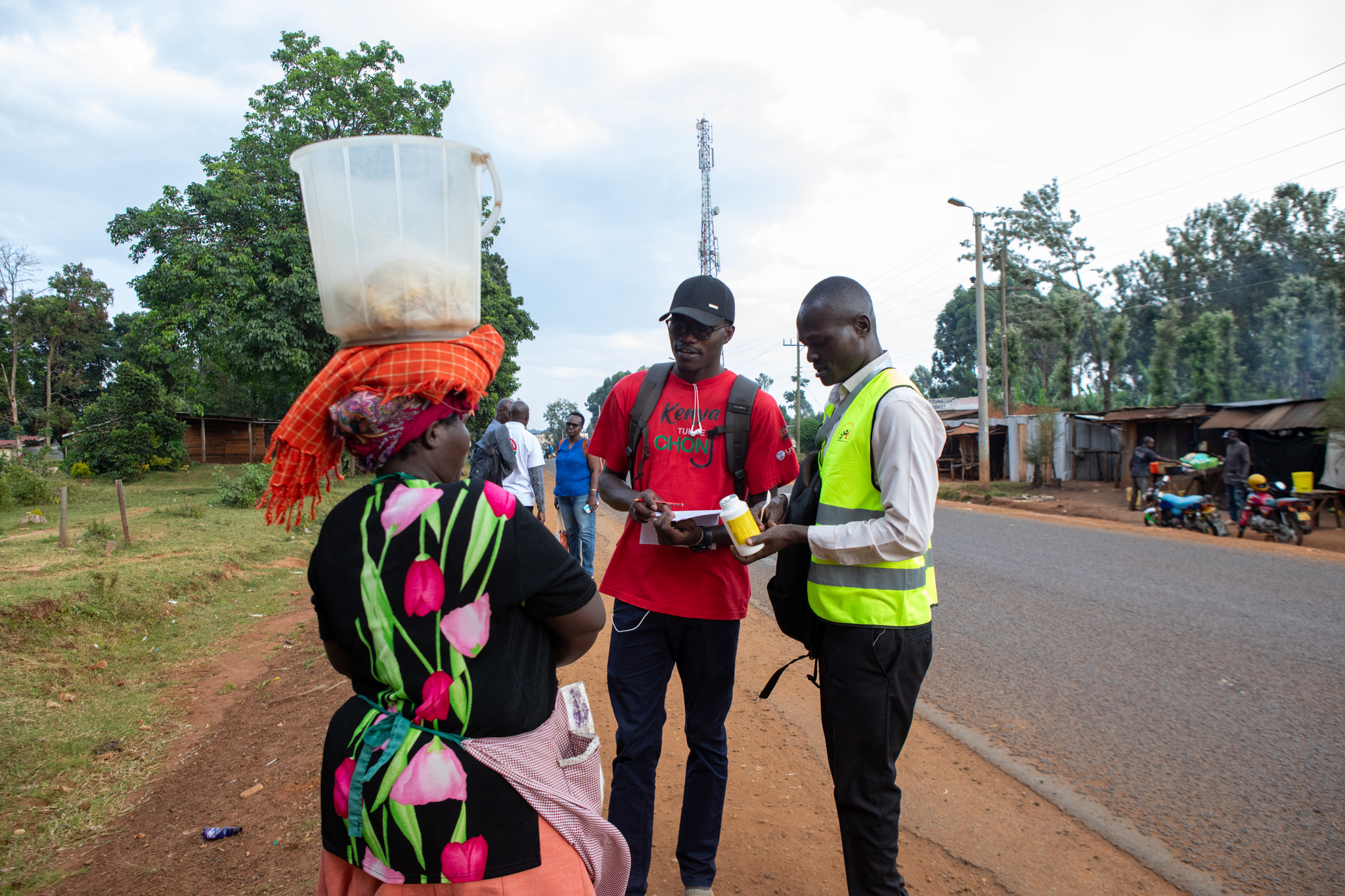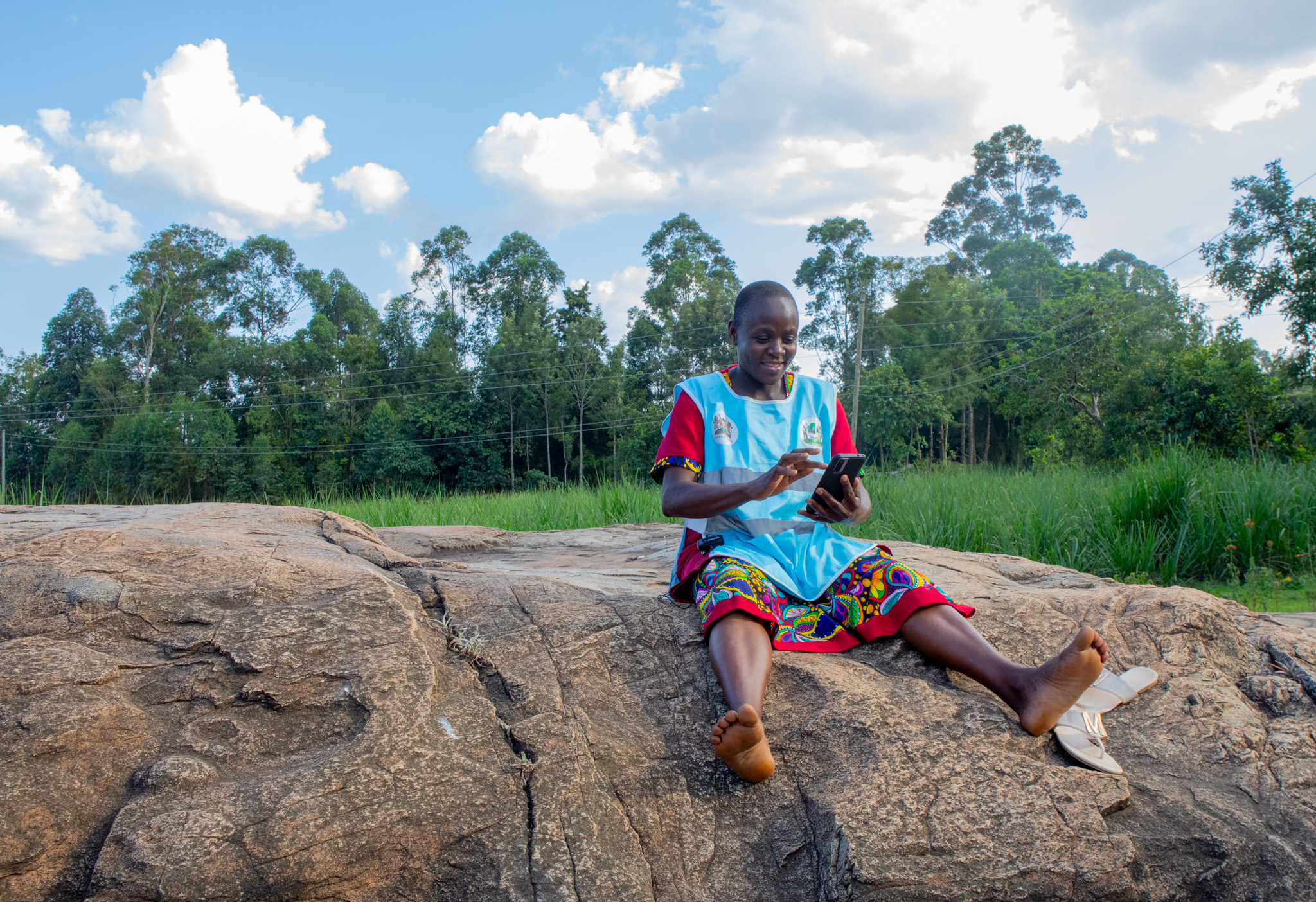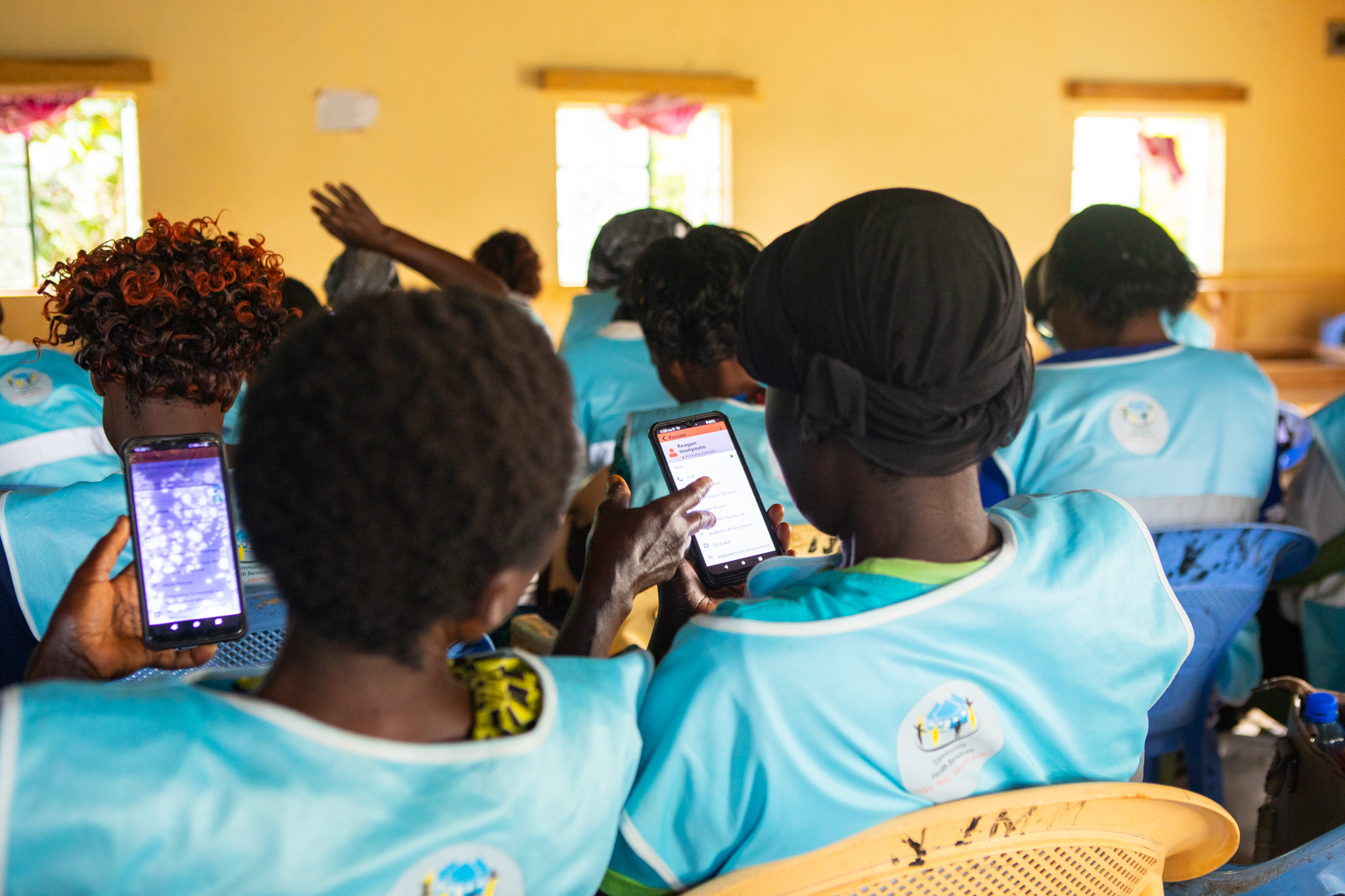

When Community Health Promoters (CHPs) arrive at the doorstep of Gentrix Mtunguti with Mebendazole and Praziquantel medicines, she welcomes them with open arms.
Mtunguti, a 29-year-old mother from Namasanda village in Bungoma County knows the medicines will protect her family from intestinal worms and bilharzia.
The cost of these medications had been prohibitive for her, and she would only have sought them out when critically ill.
“I am happy they brought the drugs to my home,” Mtunguti says, cuddling her youngest child after a bath.
“I know these diseases are real, and I want my family to be safe. There are myths, like people saying the drugs are for family planning, but I encourage my neighbors to take them. The professionals know what is best for us,” she says.
Mtunguti’s story is not unique. Thousands of families across Western Kenya benefit from the massive Community-Based Mass Drug Administration (MDA) campaign.
The initiative delivers life-saving treatments door-to-door. Behind this effort is a well-coordinated operation driven by health workers, government officials, and international partners, all united by a shared goal to eliminate these diseases by 2030.
So far, at least five million people in Western Kenya have been dewormed in an ambitious effort to eradicate intestinal worms and Bilharzia.
The groundbreaking initiative led by Amref Health Africa is changing the narrative, providing hope and treatment to millions in the four Western counties of Kakamega, Bungoma, Vihiga, and Trans Nzoia.
The World Health Organisation (WHO) has set an ambitious target to eliminate these diseases as public health threats by 2030.
Amref Health Africa aims to interrupt transmission by 2027, three years ahead of the global deadline.

The strategy relies on preventive therapy, distributing medications like Mebendazole for intestinal worms and Praziquantel for bilharzia to entire at-risk populations.
This is seen as a relief to the four counties of Western Kenya, which have been fighting the silent but intense battle against two ancient and debilitating diseases; schistosomiasis (commonly known as bilharzia) and soil-transmitted helminths (intestinal worms).
These neglected tropical diseases (NTDs), often overlooked in global health discussions, disproportionately affect the most vulnerable, trapping them in cycles of illness and poverty.
In these counties, millions of people face the constant threat of bilharzia and intestinal worms.
These diseases thrive in areas with poor sanitation and limited access to clean water, leading to long-term health problems.
Bilharzia, transmitted through contaminated freshwater, can cause severe organ damage, while intestinal worms spread through soil, leading to malnutrition, anemia, and stunted growth in children.
Both diseases are preventable and treatable, yet they continue to afflict millions, particularly in rural communities.
Amref Kenya Country Director Meshack Ndirangu has underscored the scale of the December 2024 campaign.
“This MDA targeted 5.1 million people for intestinal worms and 1.3 million for bilharzia across 142 wards. It’s a massive undertaking, but we are committed to ensuring no one is left behind,” Ndirangu says.
The MDA campaign requires careful coordination at all levels of the health system.
It starts with macro-planning at the national level, where officials determine drug quantities and allocate resources to counties.
At the county level, health workers and community health promoters are trained to deliver medications directly to households.
Technology has revolutionised the fight against NTDs. Shamim Nyangala Mohammed, a CHP, now uses the Electronic Community Health Information System (eCHIS) to track progress in real time.
“With eCHIS, I can instantly record who has received treatment and track progress,” Shamim explains. “This digital innovation reduces errors and ensures no household is left behind,” Mohammed says.
“I am excited to use this technology,” she adds, her face bright with enthusiasm.
“It makes our work easier and more efficient. I can click on a person’s name, record the service provided, and submit the data, all without the risk of lost papers or guesswork.”
The campaign also benefits from the generosity of pharmaceutical companies like Johnson & Johnson and Merck, which donate medications through the WHO.

These partnerships are vital, ensuring life-saving drugs reach even the most remote communities. Director of Programmes for the END Fund Irene Chami highlights the importance of collaboration in the elimination campaign.
“Our mission aligns with the WHO roadmap to eliminate NTDs by 2030. We work with governments and partners like Amref to improve the health and well-being of those affected by these debilitating diseases. Success is only possible through a multisectoral approach focused on sustainable solutions,” Chami says.
While significant progress has been made, misinformation remains a significant challenge. In some communities, people fear that deworming drugs are a form of involuntary family planning.
To counter these myths, Amref, in partnership with the national and county governments, has launched a comprehensive social mobilisation campaign.
This involves engaging local leaders, religious groups, and schools to dispel myths and build trust. Patrick Nyaieka, Subcounty NTD Coordinator in Navakholo, has witnessed the impact of these efforts.
“We trained 70 Community Drug Distributors (CDDs) to use eCHIS for real-time reporting,” he says.
“They’re the bridge between the health system and the community. When people see their neighbors delivering the drugs, they’re more likely to trust the process.”
Health Cabinet Secretary and a former community health promoter Debrah Barasa underscores the value of grassroots efforts.
“I started as a CHP, testing for HIV and encouraging people to take their medication. Today, CHPs are the pillars of our health system. They stay in the community, know the families, and play a crucial role in bringing health to the people,” Barasa says.
The MDA campaign is more than just a health intervention, it is a step toward a brighter future for Western Kenya.
By eliminating these diseases, the region can break the cycle of poverty and unlock its full potential. Kakamega County Deputy Governor Ayub Savula stresses the importance of community involvement.

“We have established 12 Primary Care Networks (PCNs) to enhance service delivery. I encourage every member of the community to participate in this exercise. Together, we can break the cycle of transmission,” Savula says.
The fight against NTDs is far from over, but the momentum is undeniable. With every dose administered, every community mobilised, and every life transformed, Western Kenya is moving closer to a future where bilharzia and intestinal worms are no longer public health threats.
The key to success lies in sustained government investment, community participation, and continued innovation.
Together, we can turn the dream of elimination into reality.
“Addressing NTDs not only saves lives but also unlocks economic opportunities. Let us work together to make universal health coverage a reality for every Kenyan,” Barasa says.
"I can’t wait for Friday to come and start the MDA. I’m ready,” and so is Western Kenya ready to heal, thrive, and claim its future," Shamim, the CHP says.











